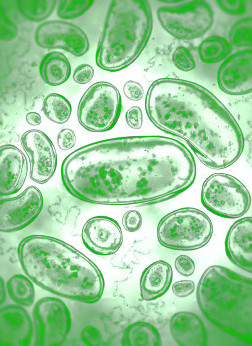Size study shows stressful change
 Australian researchers are studying why animals are they size they are.
Australian researchers are studying why animals are they size they are.
A new study by Monash biologists has provided fresh insights into the long-standing questions of why animals are of the size they are and what happens when we artificially induce a change in their size.
Using a technique called ‘artificial selection’ the research team genetically evolved small and large populations of a single-celled marine alga Dunaliella tertriolecta that differed in size by 500 per cent.
They then assessed physiological and ecological consequences of this size shift.
The research is expected to influence the international debate on how natural ecosystems respond to human impacts.
“We are seeing rapid changes in animal body sizes around the world as a result of activities such as hunting and fishing, as well as climate change” said the study’s lead author Dr Martino Malerba.
“We found that populations consisting of a few large individuals grew faster than a population of equivalent biomass made up of many small individuals.
“But this was only the case when resources [in this case light and nutrients] were plentiful, whereas when light was reduced the smaller algal populations performed better,” he said
This research forms part of a larger research program developing new theories on how and why organisms grow.
For a marine environment where organism size is decreasing, it will mostly mean bad news.
“We calculated a four-times greater biomass production in populations of larger cells compared to the equivalent volume of smaller cells,” Dr Malerba said.
“Evolving smaller body sizes can improve your ability to persist when resources are limited, but at a cost of lowered productivity.”
“If the environment allows you to ‘acquire too much’, be big! Otherwise, better to ‘desire little” and be little’.
“Open oceans are the most productive systems in the world and single-celled algal species dominate this production.
“The study found that climate change can severely reduce this rate of carbon fixation by as much as 40 per cent,” he said.







 Print
Print